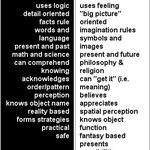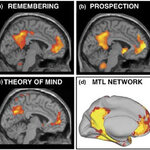Science category landing
Social Sciences

Logic or feeling. Left-brained or right-brained. The terms have become part of the lexicon for categorizing intellectual and artistic people. It turns out there may be more than just wishful thinking in labelling people. New research has furthered our understanding of the different roles of the left and right sides of our brains.
A study led by the University of Exeter has highlighted differences in the ability of people to perform basic tasks, depending on whether the left or right sides of their brains have been damaged by a stroke. The research identified the role of the right side of…

More than 26 million people worldwide were estimated to be living with Alzheimer’s disease in 2006, according to a study led by researchers at the Johns Hopkins Bloomberg School of Public Health.
The researchers also concluded the global prevalence of Alzheimer’s disease will grow to more than 106 million by 2050. By that time, 43 percent of those with Alzheimer’s disease will need high-level care, equivalent to that of a nursing home.
“We face a looming global epidemic of Alzheimer’s disease as the world’s population ages,” said the study’s lead author, Ron Brookmeyer, PhD, professor in…

We've all had the feeling we've been somewhere before or had a feeling we've previously had a conversation. It isn't magic or mysticism, the answer is in a set of neurons called your 'place cells.'
Researchers believe these 'place cells' fire to provide a sort of blueprint for any new space we encounter. The next time we see the space, those same neurons fire. Thus we know when we've been somewhere before and don't have to relearn our way around familiar turf. But similar spaces may activate overlapping neuronal blueprints, leaving room for confusion if the neurons are not fine-tuned. Thus…

Is ADHD over-diagnosed? Claims vary, with some people stating that ADHD prescriptions are substituting for parenting and teaching. No matter your opinion, ADHD medication is in greater use than ever and not just for children.
A recent study shows that treatment rates have been increasing in all age groups, and improved identification has contributed to rapidly growing treatment rates for adults. Female patients show the greatest increase of all.
The study, Trends in Medication Treatment for ADHD, revealed rapid growth of ADHD medication use in all demographic groups except seniors, with…

A newly discovered interplay of cells in one of the brain's memory centers sheds light on how you recall your grocery list, where you laid your keys, and a host of important but fleeting daily tasks.
Scientists at Weill Cornell Medical College say their experiments with common goldfish are uncovering the secrets of a form of short-term recall known as "working memory."
"We've now identified a mechanism that can organize the activity of groups of cells involved in this important form of recall," says lead researcher Dr. Emre Aksay, assistant professor of computational neuroscience in the HRH…

Imagination refers to holding in mind a representation that may not be (yet) 'true' and does not necessarily reflect the facts about the external world or the Reality as of now. The act of imagination may use previous memories and a general knowledge of the world to recreate past memories or to imagine novel future events.
An article by Simon Baron Cohen, discusses the biology of imagination. Simon distinguishes between the contents of imagination , which are culturally determined; and the capacity for imagination, which is biologically grounded. He also focuses on imagination as a false…

The ability to learn from experience is of central importance to human existence. It allows us to acquire many of the skills we need to complete a wide variety of complicated, multi-step tasks in an efficient manner. It also creates habit – a critical, if often overlooked factor in the product and service choices consumers make. An important new study from the Journal of Consumer Research demonstrates how this “cognitive lock-in” can cause us to remain loyal to a product, even if objectively better alternatives exist.
“We find that consumers typically are not aware that this mechanism is a…

Researchers at the Stanford University School of Medicine have illuminated the path taken by human neural stem cells that were transplanted into the brains of rats and mice, and found that the cells successfully navigate toward areas damaged by stroke.
The research group placed miniscule particles of iron inside stem cells to act as cellular beacons detected by magnetic resonance imaging. With the ability to monitor where the human stem cells go in real time, researchers will have an easier time learning the best way of using the cells to treat human neural disorders, such as stroke,…

Indiana University neuroscientists Olaf Sporns and Christopher Honey find the 98 percent of brain activity that other researchers consider just background noise to be fascinating and important.
Brains are always active, even when people are at rest. In this "resting state," waves of neural activity ripple through the brain, creating fluctuating and ever-changing patterns. Sporns and Honey's work on modeling this brain activity sheds new light on how and when these mysterious fluctuations occur and offers insights into what the brain does while idle.
"Some people see the brain in terms of…

People who suffer from anxiety tend to interpret ambiguous situations, situations that could potentially be dangerous but not necessarily so, as threatening. Researchers from the Mouse Biology Unit of the European Molecular Biology Laboratory (EMBL) in Italy have now uncovered the neural basis for such anxiety behaviour in mice. They state that a receptor for the messenger serotonin and a neural circuit involving a brain region called the hippocampus play crucial roles in mediating fear responses in ambiguous situations.
A mouse that has learned that a certain cue, for example a tone, is…